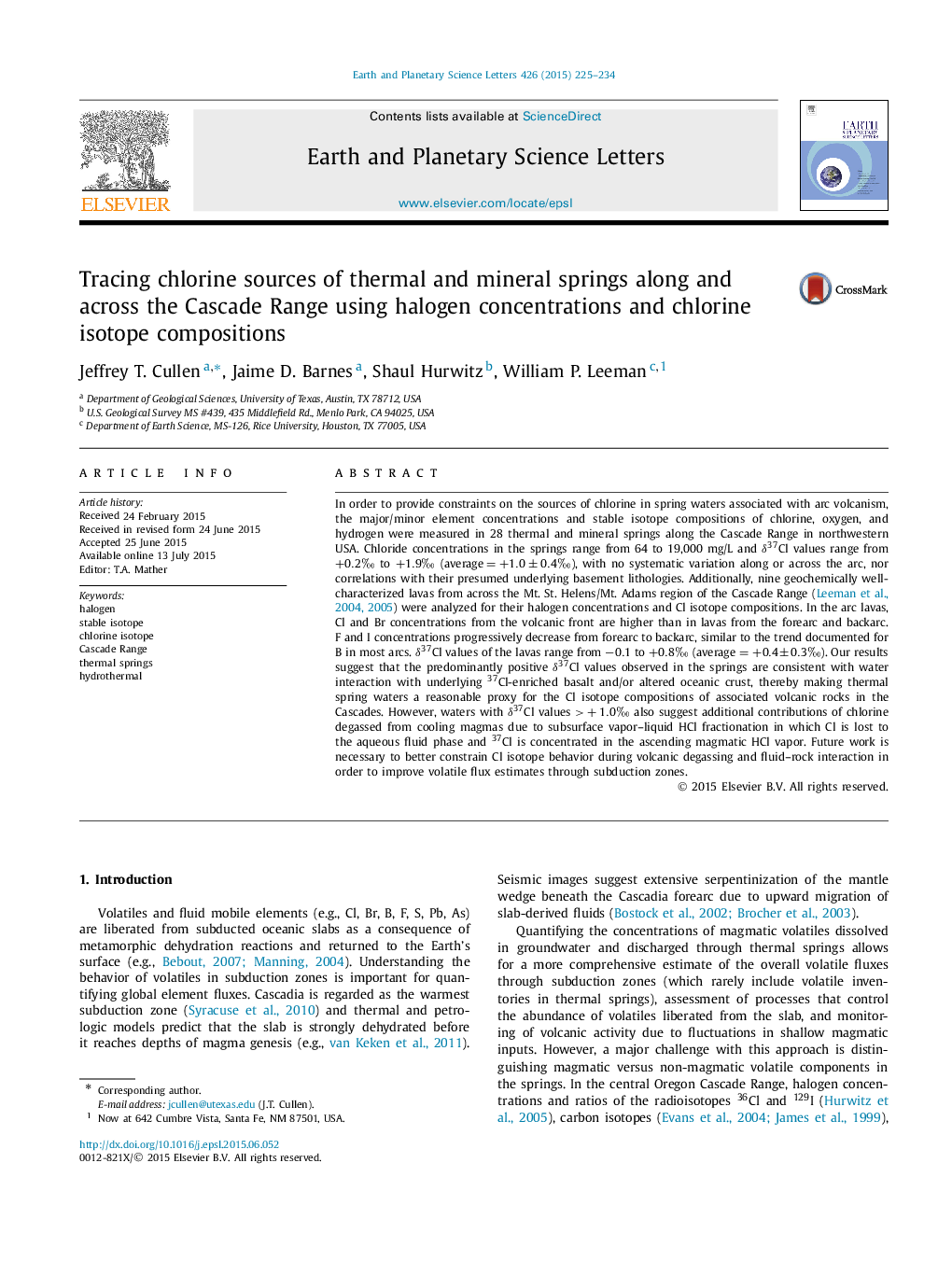| Article ID | Journal | Published Year | Pages | File Type |
|---|---|---|---|---|
| 6428136 | Earth and Planetary Science Letters | 2015 | 10 Pages |
â¢Cascade Range thermal springs have positive δCl37 values.â¢Springs have Cl/Br ratios higher than seawater and Cl/B ratios lower than seawater.â¢Mass balance modeling suggests some Cl is derived from water interaction with basalt.â¢Interaction with altered basalt may account for the highest δCl37 values.â¢Chlorine degassing from cooling magmas may also explain the highest δCl37 values.
In order to provide constraints on the sources of chlorine in spring waters associated with arc volcanism, the major/minor element concentrations and stable isotope compositions of chlorine, oxygen, and hydrogen were measured in 28 thermal and mineral springs along the Cascade Range in northwestern USA. Chloride concentrations in the springs range from 64 to 19,000 mg/L and δCl37 values range from +0.2â° to +1.9â° (average=+1.0±0.4â°), with no systematic variation along or across the arc, nor correlations with their presumed underlying basement lithologies. Additionally, nine geochemically well-characterized lavas from across the Mt. St. Helens/Mt. Adams region of the Cascade Range (Leeman et al., 2004, 2005) were analyzed for their halogen concentrations and Cl isotope compositions. In the arc lavas, Cl and Br concentrations from the volcanic front are higher than in lavas from the forearc and backarc. F and I concentrations progressively decrease from forearc to backarc, similar to the trend documented for B in most arcs. δCl37 values of the lavas range from â0.1 to +0.8â° (average = +0.4±0.3â°). Our results suggest that the predominantly positive δCl37 values observed in the springs are consistent with water interaction with underlying 37Cl-enriched basalt and/or altered oceanic crust, thereby making thermal spring waters a reasonable proxy for the Cl isotope compositions of associated volcanic rocks in the Cascades. However, waters with δCl37 values >+1.0â° also suggest additional contributions of chlorine degassed from cooling magmas due to subsurface vapor-liquid HCl fractionation in which Cl is lost to the aqueous fluid phase and 37Cl is concentrated in the ascending magmatic HCl vapor. Future work is necessary to better constrain Cl isotope behavior during volcanic degassing and fluid-rock interaction in order to improve volatile flux estimates through subduction zones.
